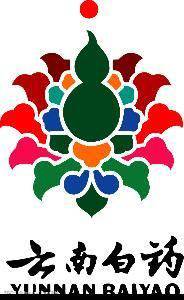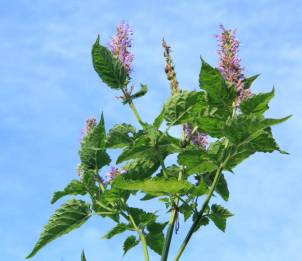
In Si Ni San (Four Reversal Powder), Chai Hu (Bupleurum) is used.
Sha Yao (Peony), Zhi Shi (Bitter Orange), and Gan Cao (Licorice) are essential.
This addresses the condition of Yang Qi stagnation leading to reversal.
It effectively soothes the liver and regulates the spleen.
Si Ni Tang (Four Reversal Decoction) warms the middle and disperses cold.
Fu Zi (Aconite), Gan Jiang (Dried Ginger), and Gan Cao (Licorice) are included.
The pulse may be weak and on the verge of collapse, but can be restored.
Cold extremities can return to Yang.
When placing these two formulas side by side, one might instinctively think, isn’t it just a comparison between Si Ni San and Si Ni Tang? This seems simple, and thus, the following content may just roll off your tongue. Of course, this does not exclude the possibility that your learning ability may need improvement, and you might not be able to articulate it immediately~( ̄▽ ̄~)~
Si Ni San, composed of Chai Hu, Sha Yao, Zhi Shi, and Gan Cao, is a harmonizing formula that has the effects of regulating the liver and spleen, dispelling pathogenic factors, and relieving stagnation. It is primarily used for Yang Qi stagnation and reversal syndrome, characterized by cold hands and feet, abdominal pain, or diarrhea with a heavy sensation, and a wiry pulse; it also addresses liver and spleen Qi stagnation syndrome, with symptoms of rib-side distension, abdominal pain, and a wiry pulse. Si Ni Tang, made from Fu Zi, Gan Jiang, and Gan Cao, is a warming formula that has the effects of warming the middle, dispelling cold, and rescuing from reversal. It is used for Yang deficiency with impending collapse, spontaneous sweating, cold extremities, diarrhea with clear fluids, and a weak pulse on the verge of collapse.
Most people analyze these formulas based on their composition and therapeutic effects, but if you were to ask a freshman who hasn’t studied any professional courses, they might say, what’s the difference? Ah! (Silently nitpicking…) Si Ni San and Si Ni Tang are just one being a powder and the other a decoction, right? At first glance, it might seem laughable, but upon reflection, there is indeed profound meaning here. Anyone with a certain understanding of dosage forms knows that ‘powder’ and ‘decoction’ are two different forms. To be more professional, powders are solid forms, while decoctions are liquid forms.
Many people overlook the small print in the Shang Han Lun (Treatise on Cold Damage), where the preparation methods are often skipped, but these often include some medicinal compositions, such as fresh ginger and jujube, which are important principles. Similarly, why is it called ‘San’ (powder) and not ‘Tang’ (decoction)? ‘Take the four ingredients, pound and sift, and take with white drink (rice soup) using a spoon, three times a day.’ The original formula was to be taken as a powder, using white drink (rice soup) to reduce the irritation of the powder on the throat, and also to imply that when the middle Qi is harmonized, the Yin and Yang Qi can connect smoothly. However, nowadays, very few people in clinics will prescribe Chai Hu, Sha Yao, Zhi Shi, and Gan Cao as a powder; most directly prescribe it as a decoction, leading to a chaotic situation where Si Ni San has become Si Ni Tang.
At this point, you might wonder, will such changes in dosage forms affect efficacy? The answer is certainly yes. We all know that different routes of administration affect drug absorption; topical application is not as effective as oral administration, and oral administration is not as effective as injection. The direct oral intake of powders and the oral intake after composing them into decoctions have already changed the components. Some scholars have conducted animal experiments comparing the effects of Si Ni San as a water decoction, powder, and rice soup combined with Si Ni San powder, finding that the rice soup combined with Si Ni San powder had the best effect, indicating that the ancient method of using white drink for administration is indeed more effective than the modern method of water decoction.
Unclear processing and uncertain medicinal properties lead to ineffective decoctions. When we studied the processing of Chinese herbs, many TCM students and I noted that the separation of medicine and pharmacy has led to a lack of focus on processing, let alone dosage forms. Nowadays, many dosage forms are directly mass-produced, simplified in clinics to water decoctions, pre-decocted, or granules, and the pros and cons of these should be examined. The ancients were meticulous in their use of medicine; Xu Dachun pointed out in the Yao Xue Yuan Liu Lun (On the Origins of Medicine) that ‘the method of decocting medicine should be deeply discussed, as the efficacy of the medicine depends entirely on this… The methods are recorded at the end of ancient formulas, and each is different.’ The Shang Han Lun provides detailed discussions on the decoction methods for each formula, which should not be overlooked.
Traditional dosage forms of Chinese herbal formulas are mostly decoctions and are widely used in clinical practice, along with forms such as pills, powders, pastes, and elixirs. During the Song Dynasty, traditional decoctions were transformed into water-prepared powders, and in modern times, most powders have been converted into decoctions. Changes in dosage forms can significantly alter the material basis or component ratios within formulas, thereby changing the characteristics and properties of the formulas, and may even fail to achieve the expected therapeutic effects. In modern clinical and experimental research, many scholars have studied the impact of changing dosage forms from powders to decoctions, which can be categorized into three situations: 1. Traditional powders converted to decoctions. 2. Traditional decoctions converted to powders. 3. Traditional pills and other forms converted to powders and decoctions. Most studies indicate that the efficacy decreases when traditional powders are converted to decoctions, and the released components are reduced. However, when traditional decoctions are converted to powders, the therapeutic effects are comparable, but the economic cost is significantly better than that of sliced forms. Traditional pills and other forms converted to powders and decoctions still show better effects with powders. For example, both Xiao Yao San (Free and Easy Wanderer Powder) and its decoction can improve clinical symptoms in patients with liver Qi stagnation and spleen deficiency, but the powder is more effective than the decoction; the low-polarity chemical components in Wu Ling San (Five-Ingredient Powder with Poria) show significant differences between decoction and powder, with the decoction severely lacking low-polarity components; and Zuo Jin Wan (Left Metal Pill) powder shows better effects against gastric ulcers in rats than the water decoction. In studies aimed at improving external powders, many drugs exhibit better percutaneous absorption characteristics when converted to ointments and patches than in powder form.
In the improvement of powder dosage forms, two well-known medicines must be mentioned—Yunnan Baiyao and Huo Xiang Zheng Qi San. Since its inception, Yunnan Baiyao has been supplied to the market as a powder, convenient for both internal and external use, and easy to mix with other medications. Despite being produced for over a century, it remains available on the market. However, due to the difficulty in accurately measuring the dosage of powders and the discomfort during internal use, Yunnan Baiyao has been made into capsule form, which retains the advantages of powders while overcoming the discomfort of internal use, allowing for accurate dosing, and is convenient for storage, transport, and use, receiving widespread acclaim. The external use of Yunnan Baiyao has developed into an aerosol, which has now become its main dosage form.

Huo Xiang Zheng Qi San originates from the Tai Ping Hui Min He Ji Ju Fang (Formulas for Benefiting the People), with a history of over a thousand years. It is named Huo Xiang Zheng Qi because it uses Huo Xiang (Agastache) as the main ingredient, which can rectify the Qi. It has long been regarded as an excellent remedy for preventing heat stroke and treating vomiting and diarrhea, and its modern dosage form, Huo Xiang Zheng Qi Shui (Huo Xiang Zheng Qi Water), has become more famous than the original, indicating the effectiveness of this dosage form improvement. However, due to its strong stimulating odor, it has now been converted into soft capsules, though it is generally believed that its efficacy is inferior to that of Huo Xiang Zheng Qi Shui.

“Generally speaking, decoctions are for major illnesses; powders are for acute illnesses; pills are for chronic conditions, which cannot be treated quickly, and their use is more gradual, thus treating them gently.” Based on the characteristics of powders being absorbed quickly and taking effect rapidly, they have historically been used for emergencies, such as inducing vomiting, expelling phlegm, unblocking passages, and opening orifices, as seen in emergency formulas like Xi Yan San (Emergency Saliva Powder), Tong Guan San (Passage Unblocking Powder), and Gua Ti San (Melon Stem Powder). “For those wanting to retain in the stomach, nothing is better than powders,” as powders stay longer in the stomach, allowing for local treatment while also providing systemic regulation. For toxic substances, “non-toxic substances are suitable for decoctions, mildly toxic substances for powders, and highly toxic substances must be in pill form.” For conditions caused by wind, cold, and dampness, due to the interplay of these three factors, dampness is difficult to eliminate, and since the pathogenic factors have long been hidden in the body, a gentle approach is often used, thus powders are frequently employed to gradually dispel pathogens, such as in Qiang Fu San (Sichuan Powder) and Yi Yi Ren San (Coix Seed Powder).
In the preface of the Shen Nong Ben Cao Jing (Shen Nong’s Classic of Materia Medica), it is stated: “Medicinal properties are suitable for pills, powders, decoctions, wine-soaked, or paste preparations, and some substances are suitable for multiple forms, while others cannot be used in decoctions or wines, and this must follow the properties of the medicine and not be violated.” This theory has been an important basis for the selection of Chinese herbal compound dosage forms and single herb slices for over two thousand years. The application of dosage forms is directly related to the properties of the medicines. To modernize Chinese medicine, the improvement of traditional Chinese medicine dosage forms has already undergone significant changes. How to avoid the pitfalls of ‘improvement without progress’ is something we must inevitably contemplate, and how to flexibly and skillfully apply powders in clinical practice requires continuous summarization and enhancement by practitioners.
Source: Chinese Pharmacy

